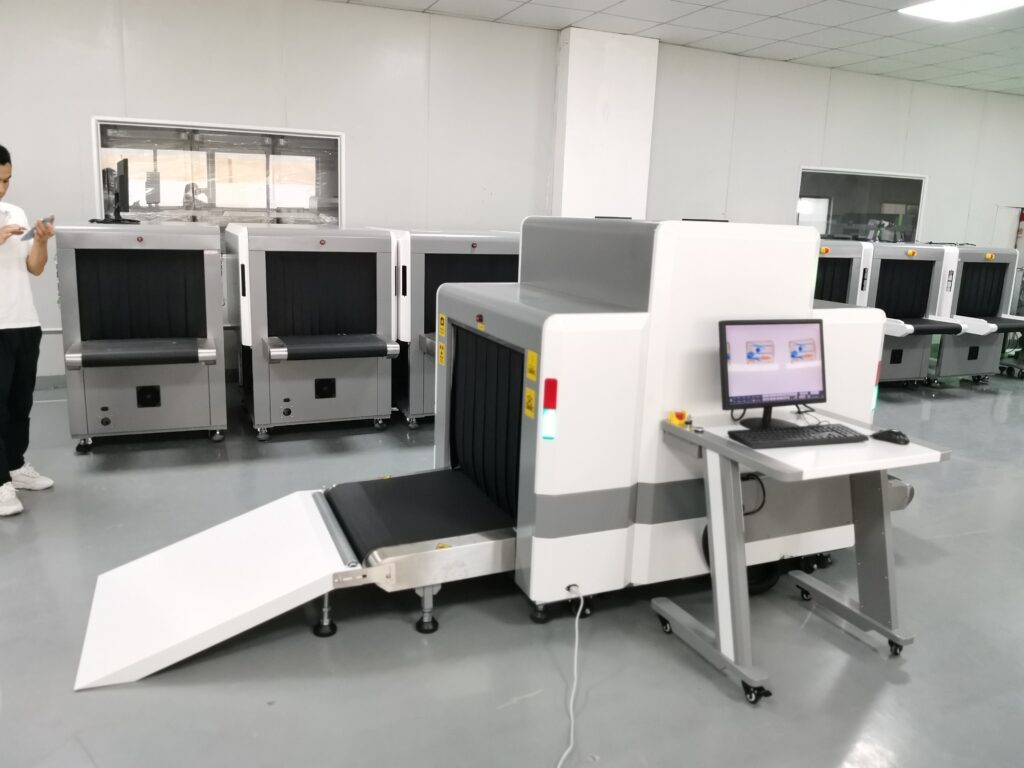 10 Things To Consider When Buying A Baggage Scanner" loading="lazy" srcset="https://www.metaldetectore.com/wp-content/uploads/2022/11/d0962e85651f5d46fb76fdb6bc241a8-1024x768.jpg 1024w, https://www.metaldetectore.com/wp-content/uploads/2022/11/d0962e85651f5d46fb76fdb6bc241a8-300x225.jpg 300w, https://www.metaldetectore.com/wp-content/uploads/2022/11/d0962e85651f5d46fb76fdb6bc241a8-768x576.jpg 768w, https://www.metaldetectore.com/wp-content/uploads/2022/11/d0962e85651f5d46fb76fdb6bc241a8-1536x1152.jpg 1536w, https://www.metaldetectore.com/wp-content/uploads/2022/11/d0962e85651f5d46fb76fdb6bc241a8-2048x1536.jpg 2048w, https://www.metaldetectore.com/wp-content/uploads/2022/11/d0962e85651f5d46fb76fdb6bc241a8-510x383.jpg 510w" sizes="(max-width: 1020px) 100vw, 1020px" title="10 Things To Consider When Buying A Baggage Scanner" />
10 Things To Consider When Buying A Baggage Scanner" loading="lazy" srcset="https://www.metaldetectore.com/wp-content/uploads/2022/11/d0962e85651f5d46fb76fdb6bc241a8-1024x768.jpg 1024w, https://www.metaldetectore.com/wp-content/uploads/2022/11/d0962e85651f5d46fb76fdb6bc241a8-300x225.jpg 300w, https://www.metaldetectore.com/wp-content/uploads/2022/11/d0962e85651f5d46fb76fdb6bc241a8-768x576.jpg 768w, https://www.metaldetectore.com/wp-content/uploads/2022/11/d0962e85651f5d46fb76fdb6bc241a8-1536x1152.jpg 1536w, https://www.metaldetectore.com/wp-content/uploads/2022/11/d0962e85651f5d46fb76fdb6bc241a8-2048x1536.jpg 2048w, https://www.metaldetectore.com/wp-content/uploads/2022/11/d0962e85651f5d46fb76fdb6bc241a8-510x383.jpg 510w" sizes="(max-width: 1020px) 100vw, 1020px" title="10 Things To Consider When Buying A Baggage Scanner" /> Are There Other Baggage scanner Features You Want?
If you’re looking for more features than just baggage scanning, consider these options:
X-ray baggage scanner with RFID
• RFID (Radio Frequency Identification) – This feature allows you to track the location of an item using radio waves. It’s often used with GPS devices.
X-ray baggage scanner with Video recording
• Video Recording – This option lets you record images as well as audio while the scanner is running.
• Barcode Reader – This feature reads barcodes printed on items such as tickets and boarding passes.
The TSA has several other features available to travelers, including:
A new technology called PreCheck allows frequent fliers to skip the line at airport security checkpoints. PreCheck is a program that lets people who meet certain criteria go through expedited screening. Travelers must pay $85 annually to be enrolled in the program.
The TSA has been testing PreCheck since
In May 2017, the agency announced that it would be expanding the program to include travelers from 25 countries, including Mexico, Canada, Australia, New Zealand, Japan, South Korea, Singapore, China, India, Malaysia, Indonesia, Vietnam, Cambodia, Laos, Thailand, Hong Kong, Macau, Taiwan, Nepal, Sri Lanka, Pakistan, Bangladesh, Ethiopia, Kenya, Ghana, Nigeria, Sierra Leone, Ivory Coast, Liberia, Guinea, Mali, Senegal, Mauritania, Morocco, Algeria, Tunisia, Egypt, Libya, Somalia, Sudan, Central African Republic, Chad, Cameroon, Congo, Equatorial Guinea, Gabon, Rwanda, Burundi, Djibouti, Eritrea, Ethiopia, Gambia, Guinea Bissau, Guinea Conakry, Guinea Equatorial, Guinea Maritime, Guinee Togolais, São Tomé and Príncipe, Cape Verde, Madagascar, Malawi, Mozambique, Namibia, Niger, Nigeria, Réunion, Seychelles, Tanzania, Uganda, Zambia, Zimbabwe, Botswana, Lesotho, Swaziland, South Africa, Angola, Namibia, Mozambique, Malawi, Zambia, Zimbabwe and Swaziland.
X-ray baggage scanner checked bin
The new rules require passengers to remove laptops, tablets, cameras, mobile phones, and other electronic devices larger than a cell phone from carry-on bags before passing through the X-ray machines. Passengers must then place those items in a bin provided at each checkpoint.
If you want to keep your electronics safe while traveling, there are several options available. For example, if you’re flying domestically, you can purchase TSA approved luggage locks. These locks cost around $10 and prevent anyone from opening your bag without your permission. Another option is to use TSA approved laptop sleeves. These sleeves fit inside your checked bag and protect your device from damage during travel. However, if you’d rather not pay extra fees for TSA approved luggage locks or laptop sleeves, you can always opt for TSA approved carry-on bags. These bags are designed specifically to hold electronics and are free of charge.
The TSA has created a website where travelers can find information about what types of items are allowed in carry-on bags and what items must be packed in checked bags. In addition, the site provides links to other resources such as packing lists and helpful hints for keeping your devices safe.
If you’re traveling with electronics, you should know that there are certain items that cannot go into your carry-on bag. These include liquids, gels, aerosols, and flammable materials. Also, if you’re flying internationally, you should check the TSA website before you travel to see which items are prohibited from being brought onto the plane. For example, some countries prohibit laptops, while others ban cell phones.
The TSA has been working to improve the security of our nation’s airports since the terrorist attacks of September 11,
In addition to the X-ray machines, there are other features at some airports that travelers might want to know about. For example, if you’re flying from New York City to Los Angeles, you’ll be able to use the new “PreCheck” program, which allows you to go through a special line at the airport. PreCheck requires a background check and fingerprinting, but it does allow you to skip the standard screening process. If you qualify, you’ll get a boarding pass before going through security.
The TSA has been testing the PreCheck program since last year, and now it’s available to anyone who wants to take advantage of it. To apply for PreCheck, you must be a U.S. citizen or permanent resident, and you must meet certain requirements. You must be traveling between two cities that are connected by direct flights, and you must have a valid passport. Once you’ve completed the application, you’ll receive a letter telling you whether or not you were accepted into the program. If you are approved, you’ll then be required to undergo a background check and fingerprint scan. After that, you’ll be allowed to bypass the normal screening process.
